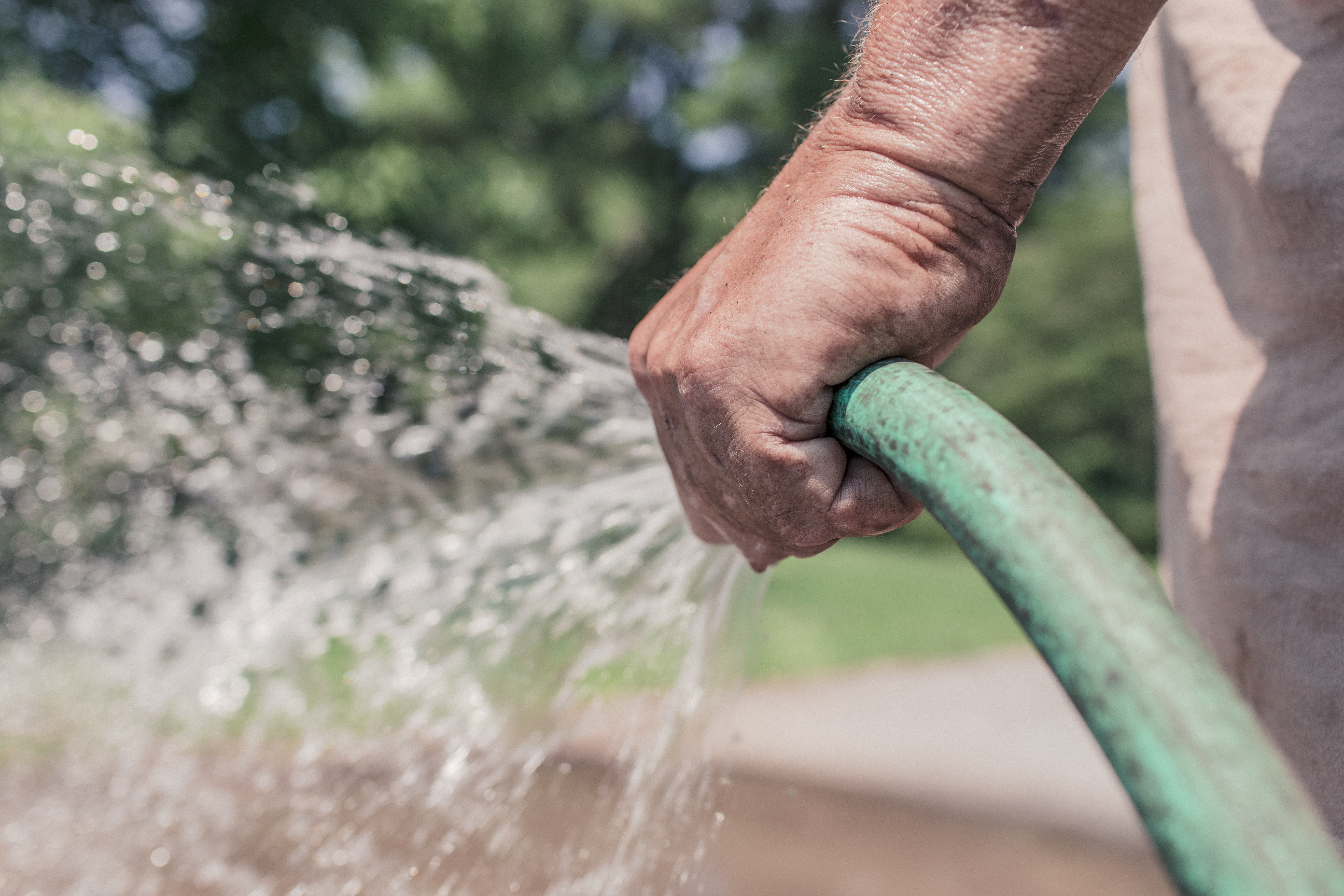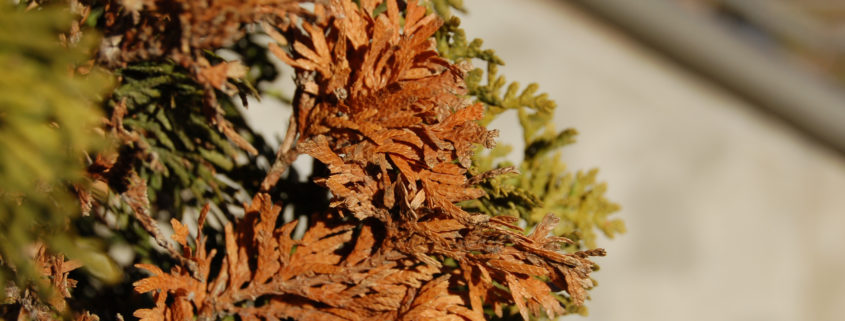Winter Watering Is Crucial For The Overall Health Of Your Landscape
Water is one of the prime necessities plants need to develop and thrive in their environment. It aids plants with their root development and is one of the factors that encourages them to produce flowers and new growth during the growing season.
Once plants go dormant for the winter, it’s mistakenly thought that they don’t require any additional watering until spring. With dry air, fluctuating temperatures, frigid winds, and low amounts of precipitation, winter watering is critical to avoid winter desiccation and for the survival and health of the trees, shrubs, and turf in your landscape.
What Is Winter Desiccation?
Winter desiccation, also known as winter drying injury, is a common drought issue that plagues the Midwest during the winter months. It occurs when winter conditions are warm and dry, and affects dormant plants by causing them to lose small amounts of water from their leaves, needles, crowns, stems, or buds.
This water loss may be accelerated at times by high winds. Plant root system injury begins to take place when water is unavailable due to dry and/or frozen soil conditions, and plants are unable to restore the amount of water that was previously lost.
Winter desiccation damage can cause browning of the needles on evergreens and leaves on broadleaf evergreens. It may even kill an entire section of the plant. However, damage may not be seen on plants until late spring into summer when temperatures continue to get warmer (see what plants are frequently affected by winter desiccation in the section below).
Once plants have been weakened by an injury, they are more susceptible to disease and insect infestations.
What Plants Are Frequently Affected by Winter Desiccation?
Frequently affected plant material includes:
- Evergreens
- Broadleaf evergreens (boxwood, hollies, and rhododendrons)
- Plant species with shallow root systems (lindens, river birches, maples, alders, hornbeams, dogwoods, willows, and mountain ashes)
- Plants that have been recently transplanted
- Newly planted trees and shrubs
Furthermore, existing lawns and newly seeded or sodded lawns are also susceptible to winter desiccation. New lawns that were planted in the fall will dry out quickly without snow cover, due to root systems that are still developing.
Existing turf that is more exposed to the weather elements and elevated turf where there are higher chances of water runoff are also more likely to dry out faster than turf that’s located in a more protected area.
Landscaping for Winter: How to Protect Your Plants
The best approach to protecting plants from winter desiccation is to regularly monitor the moisture levels of the soil in your landscape and deeply water your trees and shrubs between October and March. It’s also essential to monitor the weather conditions throughout the winter months and water during periods of extended dry weather.
So, if you’ve been asking yourself, “Should I water my landscape in winter?” check out these helpful tips on watering trees in winter:
- Newly planted trees and shrubs need more water than other plant material that has been established for more than one year.
- To determine if your plants need watering, use a metal rod or a screwdriver and probe the soil within the root zone of the plant. If the soil is moist, it should go into the soil easier than if the soil is dry. Also, when the probe is removed from the soil profile, soil will be stuck to the probe if the soil is moist.
- Plants will not need to be watered as often as during the summer months but should be watered approximately one to two times per month (weather dependent).
- Water should be applied midday when air temperatures are above 40°F. Watering at this time of the day will allow time for the water to soak into the soil profile before temperatures possibly drop back below freezing at night. Windy conditions will cause the soil to dry out faster, so frequent watering would be required at these times.
- Completely soak the soil around the base of each plant. Avoid water runoff by sticking the end of the hose into the base of each plant. Water trees by turning the water on at a low trickle and placing the end of the hose in multiple spots within the dripline (located between the trunk and the extent of the end of the branches) and beyond if possible.
- For turf, flowers, and shrubs, water should be applied at least 6 to 8 inches deep; trees should be watered more deeply (approximately 12 inches deep). Turf should be watered about 6 inches deep from the top of the soil profile.
- The length of time water should be applied to get the desired soaking depth varies as it greatly depends on water pressure and what watering method is used. Whether it’s by hose or by sprinkler, it could take upwards of 4 hours or more per watering application.
- Hoses and attachments are the best pieces of equipment to use when watering during the winter months. Remember to remove all hoses and attachments from faucets after you’re done watering and drain them completely. This safety measure will help to minimize freeze damage to equipment once freezing temperatures return.
- Do not turn on and use irrigation systems that have been winterized during the winter.
Another way to retain moisture in the soil is to mulch your landscape beds and install tree rings around the base of your trees. This will help keep the soil cool in the summer and warm in the winter, and will also help to conserve moisture levels in the soil throughout the year. Landscape beds and tree rings should be mulched up to 3 inches deep.
For tree rings and any trees located in landscape beds, mulch should be pulled back approximately 6 inches from the base of the trunk of the tree to help to prevent the chances of harboring insects and diseases that could be detrimental to the life of the tree.
Keep in mind that the seasons we experience in the Midwest can be very dry, and have prolonged periods of above- or below-average temperatures. The results these conditions can have on our landscapes can be devastating if not properly tended to.
Contact Topeka Landscape for Help With All Your Lawn & Landscaping Needs
Help protect the beauty of the plants and turf in your landscape by providing them with an adequate amount of moisture needed for their healthy and prosperous growth. All of the protection measures mentioned above can be done yourself, but our expert landscapers are always here to help.
If you have questions or concerns, contact us at 785-232-8873 and let us help with your winter watering needs!


